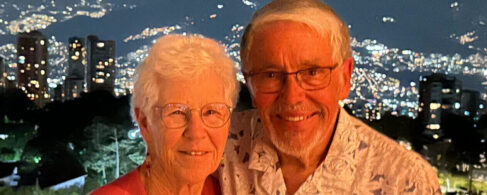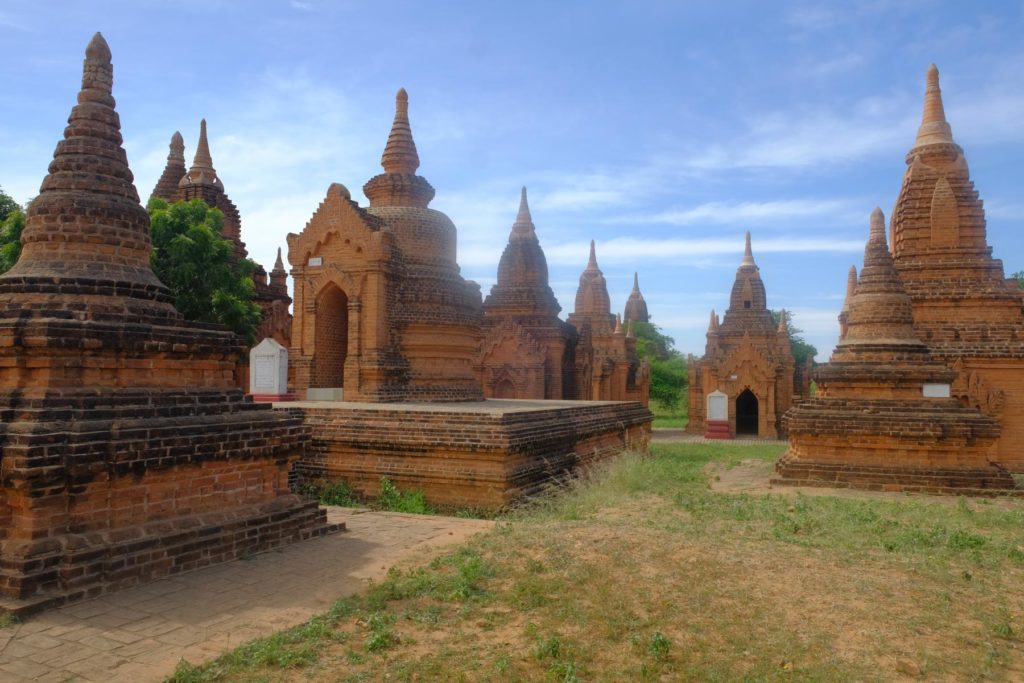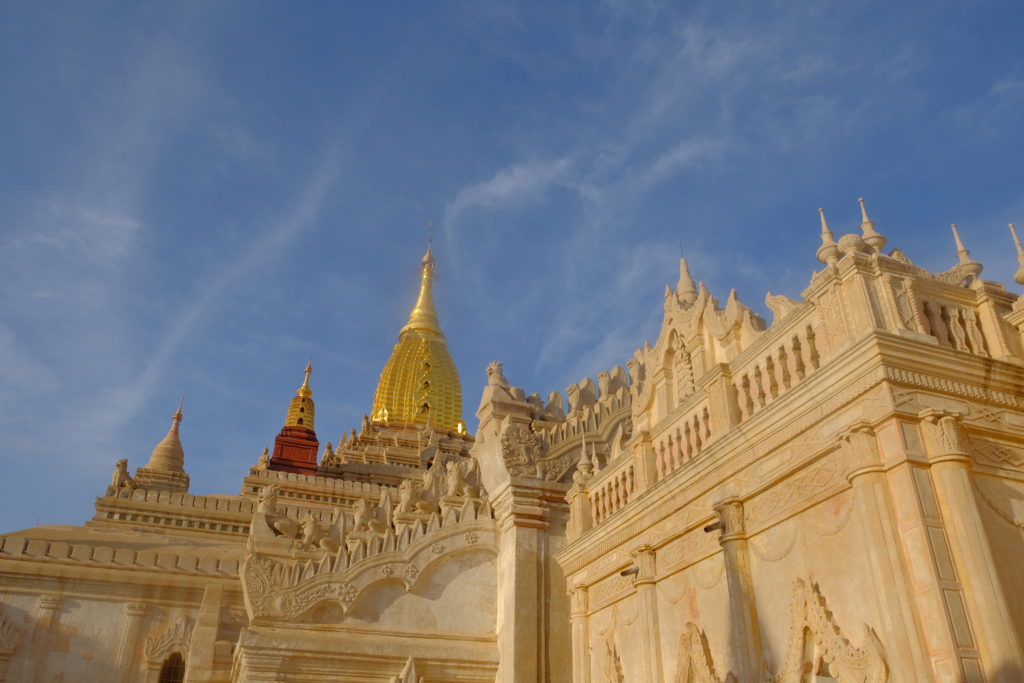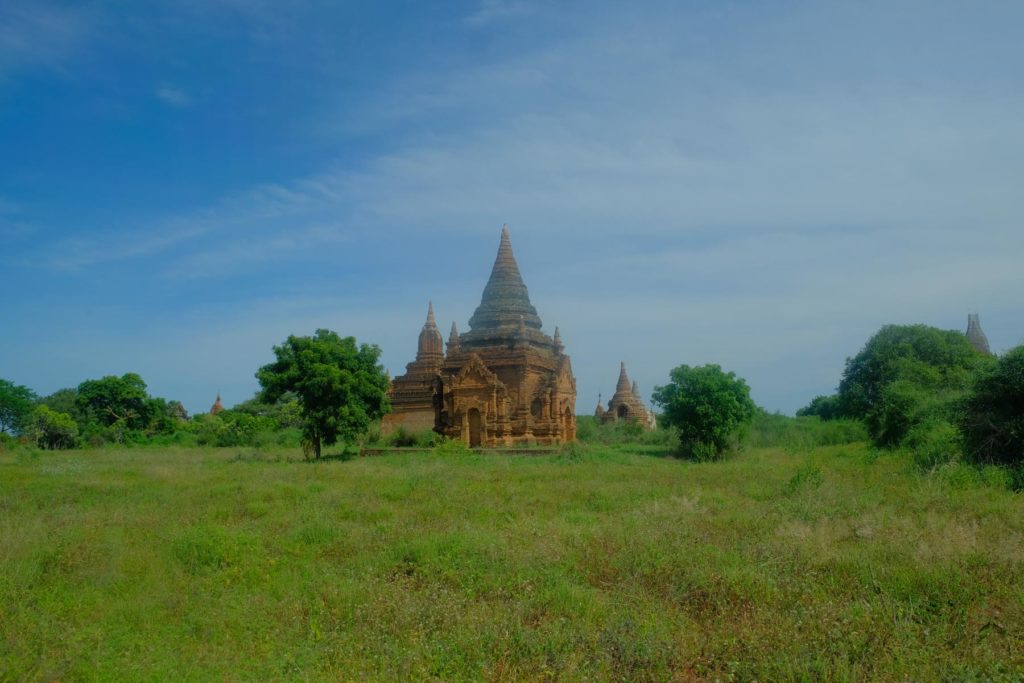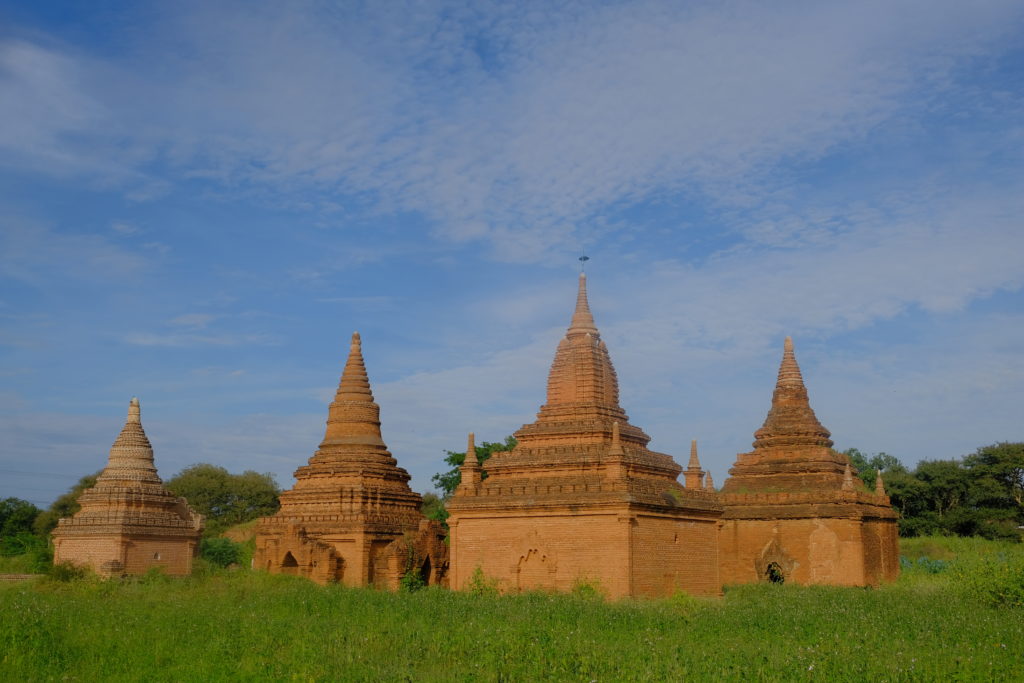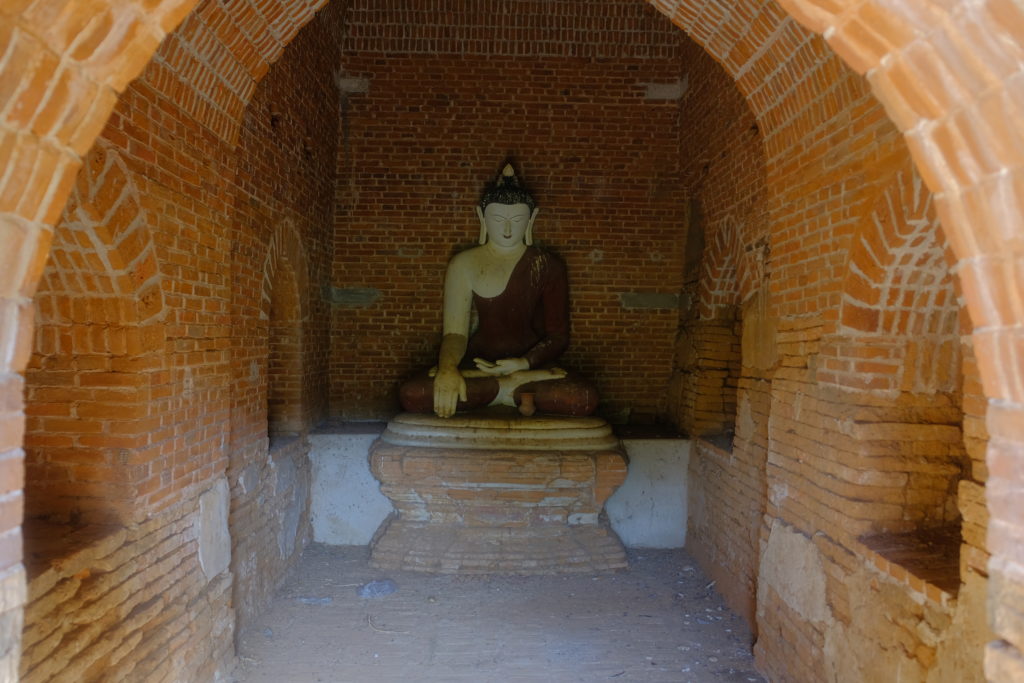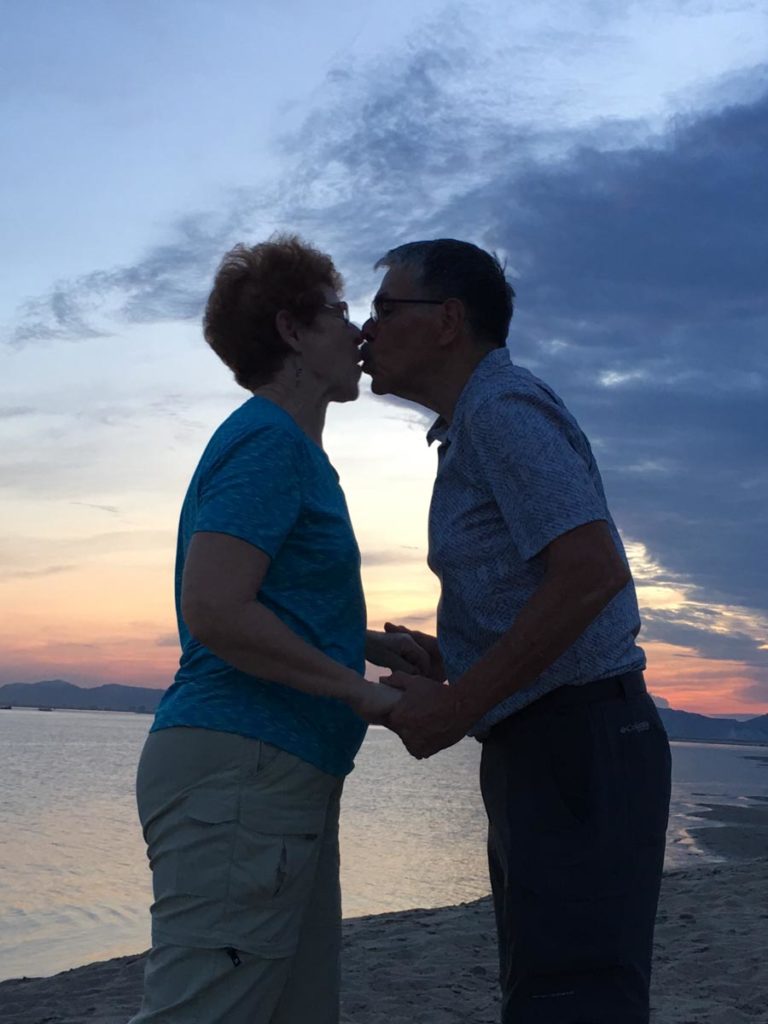6:30 AM
• Starboard engine start
• Port engine start
• Both engines shut down
• Starboard engine start
• Starboard engine shut down
• First officer exits aircraft, kicks nose gear
Now this is a twin-engine turbo prop, maybe 60 passengers and I’m no expert but I don’t think this is standard operating procedure even for a small airline in a third-world country.
Sure enough, it’s now 7 AM and we’re back in the terminal awaiting developments. The lady on the PA speaks both Burmese and English but only “Your attention please” and “Is now departing” are the only intelligible words.
Cultural factoid: the featured watch in the terminal Cherry OO Premium Watch Gallery is Casio. You’d never catch anyone in Hong Kong sporting a Casio. It’s Rolex or better, baby.
9:00 AM
Wheels up on a new aircraft.
We’re cruising at 16,000 feet headed generally north and a little bit east. The Irrawaddy River is just to the left and we’ll follow it to Bagan and then in a few days we’ll follow it to Mandalay. Nothing but farmland with an occasional village.
9:30 AM
Caloric intake so far:
• Box breakfast before leaving the hotel
• Cookies purchased by Michael and Nan while waiting
• Box snack and coffee provided by Yadanarpon Airline while waiting
• Lunch (sandwich, chocolate rolls and flan) in the air.
Danny says that most people in Myanmar are thin. Everyone tries to gain weight to be more attractive. At this rate I’ll have to drive off the girls in Bagan with a stick.
10:15
Wheels down for landing. The terrain is brown. The streams feeding the Irrawaddy are brown with silt I’d guess.
We immediately hit the trail for a country market near Bagan. We’ve seen more markets than temples so far and each one is different and interesting.
This one, for my money, was the most interesting so far. Narrow, earthen pathways through covered stalls with dim light from occasional slits in the roof. The vendors (almost exclusively women) sat on low tables with their goods spread out around them. It is almost exclusively a food market, mostly vegetables, some fish but no meat that I saw. I bought a packet of pepper and one of saffron for about two dollars.
I told our group that Judy and I are going to live in Bagan for a year and cook our way through the market. As if.
In the bus Danny gave us an overview of Myanmar’s history. Here’s a quick synopsis:
• Until the 11th century what is now Myanmar was a collection of kingdoms
• In the 11th century the king of Bagan conquered all other kingdoms to create a unified country
• This king became interested in Buddhism and decreed its adoption throughout the country
• During his dynasty 5,000 or so temples, pagodas and stupas were constructed, some large and grand, some small for individual families. Building one was seen as an act of furthering Buddhism and hence increasing the merit (karma) of the builder
• The Mongols showed up in the thirteenth century, ended the dynasty, causing Myanmar to revert back to a collection of kingdom
• A king in Yangon finally reunited the country. His dynasty lasted about 90 years, ending with the invasion of Great Britain in 1850 (give or take)
Today Myanmar is made up of six districts, generally situated along the Irrawaddy River and populated by ethnic Burmese. Seven states, generally situated along the periphery of Myanmar, are populated by distinct ethnic minority groups. Several of these states have been fighting a civil war with the central government since the Brits left in 1948.
By the way, Danny explained the distinction between the various Buddhist structures we’re seeing. A temple has an open area within which Buddhists can pray and worship. A pagoda is a pyramid-shaped structure, solid in the center that contains, buried in the core, a relic from the Buddha (or more precisely one of the four Buddhas, one of whom shows up every 5,000 years). A stupa looks like a pagoda but lacks a relic.
Driving through the countryside we saw one temple/pagoda/stupa after another. About half were destroyed by the Mongols and others were destroyed by earthquakes, the most recent occurring two years ago.
We had a nice lunch at a restaurant situated along the banks of the Irrawaddy. Then back to the hotel for a heat-of-the-day rest before the afternoon and evening activities.
Judy napped but I typed for a while and then went walking. Just down the road from our hotel is a field with 10 – 12 temples. At the entrance to the field is a motorbike repair shop under the spreading arms of a huge tree. I decided to explore the structures.
This is not a tourist area; there are no paths and the field is overgrown with waist-high weeds. Some of the weeds, I later learned from Daniel, are fennel plants from which seeds can be harvested. The field was strewn with broken fragments of bricks making walking difficult. It appears that other temples, now gone, once stood on this site. It was great fun for me: finding something new and off the beaten path with great late afternoon light.
On the bus to the Ananda Pahto temple, a gold peaked structure built in 1090 by the king who brought Buddhism to Myanmar. In side are four large statues of the Buddha, each carved from a solid piece of locally grown teak wood.
Next a boat trip on the Irrawaddy River crossing from our point of departure to what appears to be a large sand delta perhaps a half mile away. In the rainy season, which just ended, the delta would be covered by 15 feet of water. Daniel arranged a small table with beer, chips and nuts to enjoy while we watched a very nice sunset.
Finally, dinner at a local restaurant. The meal was somewhat westernized: barbequed skewers of chicken, fish and veggies. The highlight of the meal was a chick pea soup with potatoes, carrots and okra that is a local specialty.
Now it’s to bed. It’s an early morning: 5 AM wakeup, 5:30 bus for a sunrise hot air balloon ride. Never a dull moment!
